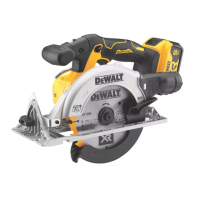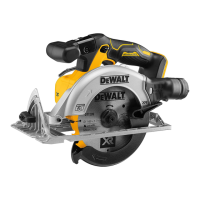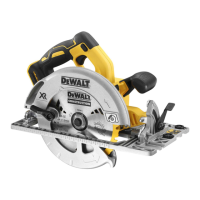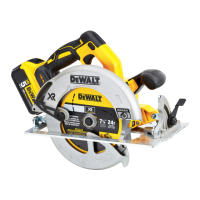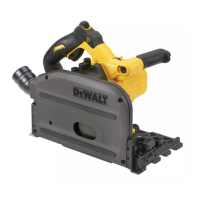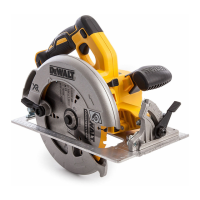13
ENGLISH
Cutting (Fig. N, O)
Place the wider portion of the saw shoe on that part of the
workpiece which is solidly supported, not on the section
that will fall off when the cut is made. As an example,
FigureN illustrates the RIGHT way to cut off the end of a
board. Always clamp work. Don’t try to hold short pieces
by hand! (FigureO) Remember to support cantilevered and
overhanging material. Use caution when sawing material
frombelow.
Be sure saw is up to full speed before blade contacts material
to be cut. Starting saw with blade against material to be
cut or pushed forward into kerf can result in kickback. Push
the saw forward at a speed which allows the blade to cut
withoutlaboring.
Hardness and toughness can vary even in the same piece of
material, and knotty or damp sections can put a heavy load
on the saw. When this happens, push the saw more slowly,
but hard enough to keep working without much decrease
in speed. Forcing the saw can cause rough cuts, inaccuracy,
kickback, and over-heating of themotor.
Should your cut begin to go off the line, don’t try to force
it back on. Release the trigger switch and allow blade to
come to a complete stop. Then you can withdraw the saw,
sight anew, and start a new cut slightly inside the wrong
one. Withdraw the saw if you must shift the cut. Forcing
a correction inside the cut can stall the saw and lead
tokickback.
IF SAW STALLS, RELEASE THE TRIGGER SWITCH AND BACK THE
SAW UNTIL IT IS LOOSE. BE SURE BLADE IS STRAIGHT IN THE
CUT AND CLEAR OF THE CUTTING EDGE BEFORERESTARTING.
As you finish a cut, release the trigger switch and allow the
blade to stop before lifting the saw from the work. As you
lift the saw, the spring-tensioned lower blade guard will
automatically close under the blade. Remember the blade
is exposed until this occurs. Never reach under the work for
any reason. When you have to retract the lower blade guard
manually (as is necessary for starting pocket cuts), always use
the retractinglever.
WARNING: When cutting thin strips, be careful to
ensure that small cutoff pieces don’t hang up on the
inside of the lower bladeguard.
Workpiece Support (Fig.G, M)
WARNING: It is important to support the work
properly and to hold the saw firmly to prevent loss of
control which could cause personal injury. FigureG
illustrates proper hand support of the saw. Maintain a
firm grip with both hands on the saw and position your
body and arm to allow you to resist kickback if it occurs.
ALWAYS TURN OFF TOOL AND REMOVE BATTERY
BEFORE MAKING ANY ADJUSTMENTS!
Figure G shows proper sawing position. Note that hands are
kept away from cutting area. To avoid kickback, DO support
board or panel NEAR the cut (Fig.M). DON’T support board
or panel away from the cut (Fig.M).
Place the work with its “good” side – the one on which
appearance is most important – down. The saw cuts upward,
so any splintering will be on the work face that is up when
you cutit.
Rafter Hook (Fig.J [DCS565])
WARNING: To reduce the risk of serious personal injury,
do not use the tool's rafter hook to hang the tool from
your body. DO NOT use the rafter hook for tethering or
securing the tool to a person or object during use. DO
NOT suspend tool overhead or suspend objects from
the rafterhook.
WARNING: To reduce the risk of injury from the circular
saw falling on operators or bystanders, make sure it
is supported securely when using the rafter hook, or
resting in a secure and stable location when not in
use. Be sure to keep the area below clear to reduce the
risk of the tool or off‑cut material falling and striking
someone or somethingbelow.
The circular saw has a convenient rafter hook
23
that allows
it to hang on a suitable, stable structure between uses.
The rafter hook is not for tethering or securing the tool to a
person or object during use whenelevated.
Proper Hand Position (Fig. G)
WARNING: To reduce the risk of serious personal injury,
ALWAYS use proper hand position as shown.
WARNING: To reduce the risk of serious personal
injury, ALWAYS hold securely in anticipation of a
suddenreaction.
Proper hand position requires one hand on the main
handle
20
and one hand on the auxilliary handle
12
.
Installing and Removing the Battery Pack
(Fig.F)
NOTE: For best results, make sure your battery pack is
fullycharged.
To install the battery pack
3
into the tool handle, align the
battery pack with the rails inside the tool’s handle and slide it
into the handle until the battery pack is firmly seated in the
tool and ensure that it does notdisengage.
To remove the battery pack from the tool, press the release
button
13
and firmly pull the battery pack out of the tool
handle. Insert it into the charger as described in the charger
section of thismanual.
OPERATION
WARNING: To reduce the risk of serious personal
injury, turn unit off and remove the battery pack
before making any adjustments or removing/
installing attachments or accessories. An
accidental start‑up can causeinjury.
Prior to Operation
• Make sure the guards have been mounted correctly.The
saw blade guard must be in closedposition.
• Make sure the saw blade rotates in the direction of the
arrow on theblade.
• Do not use excessively worn sawblades.
3. Push the dust extraction port
22
onto the circular saw
body until the locks engage the dust extraction port and
an audible click isheard.
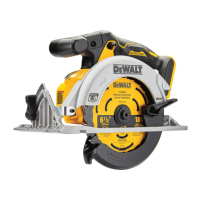
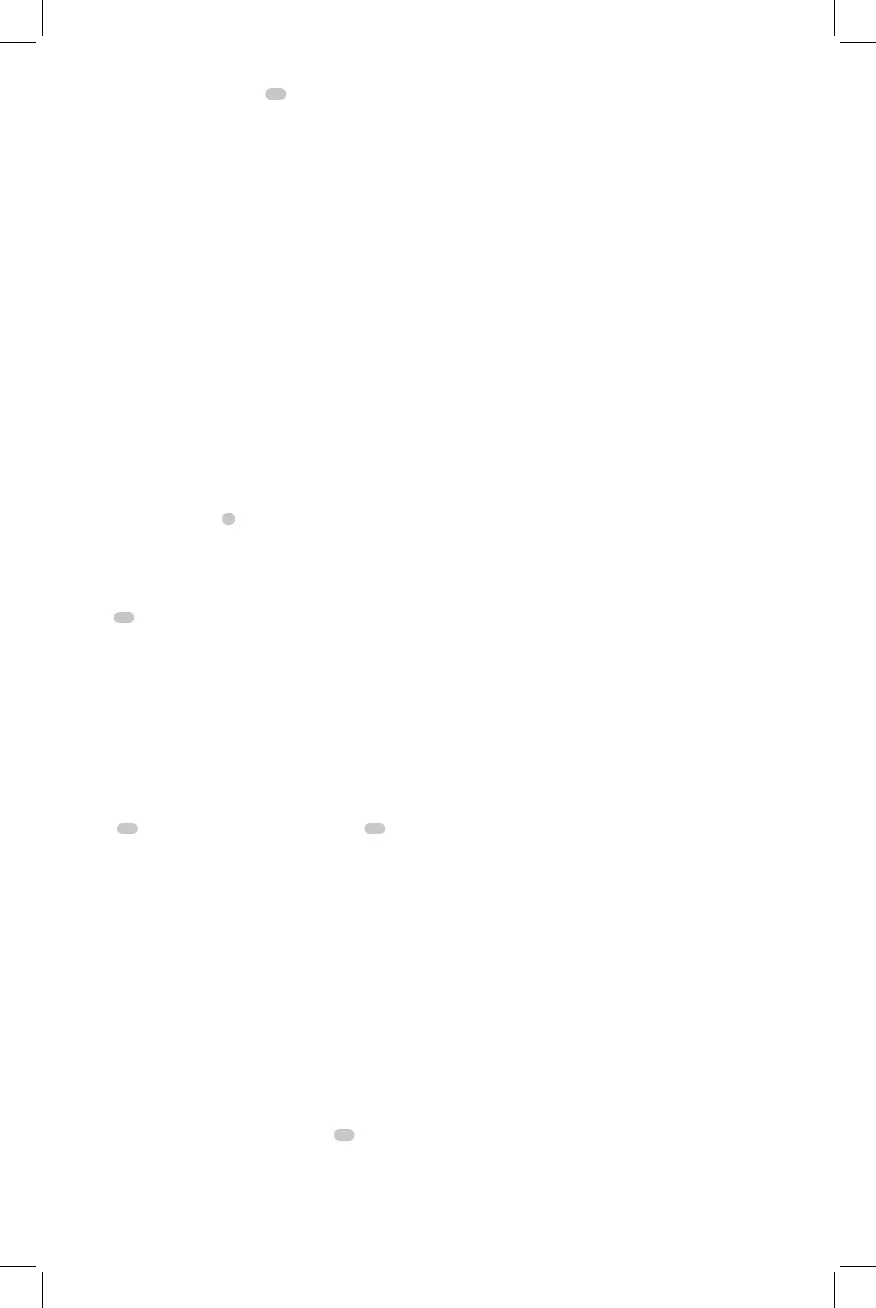